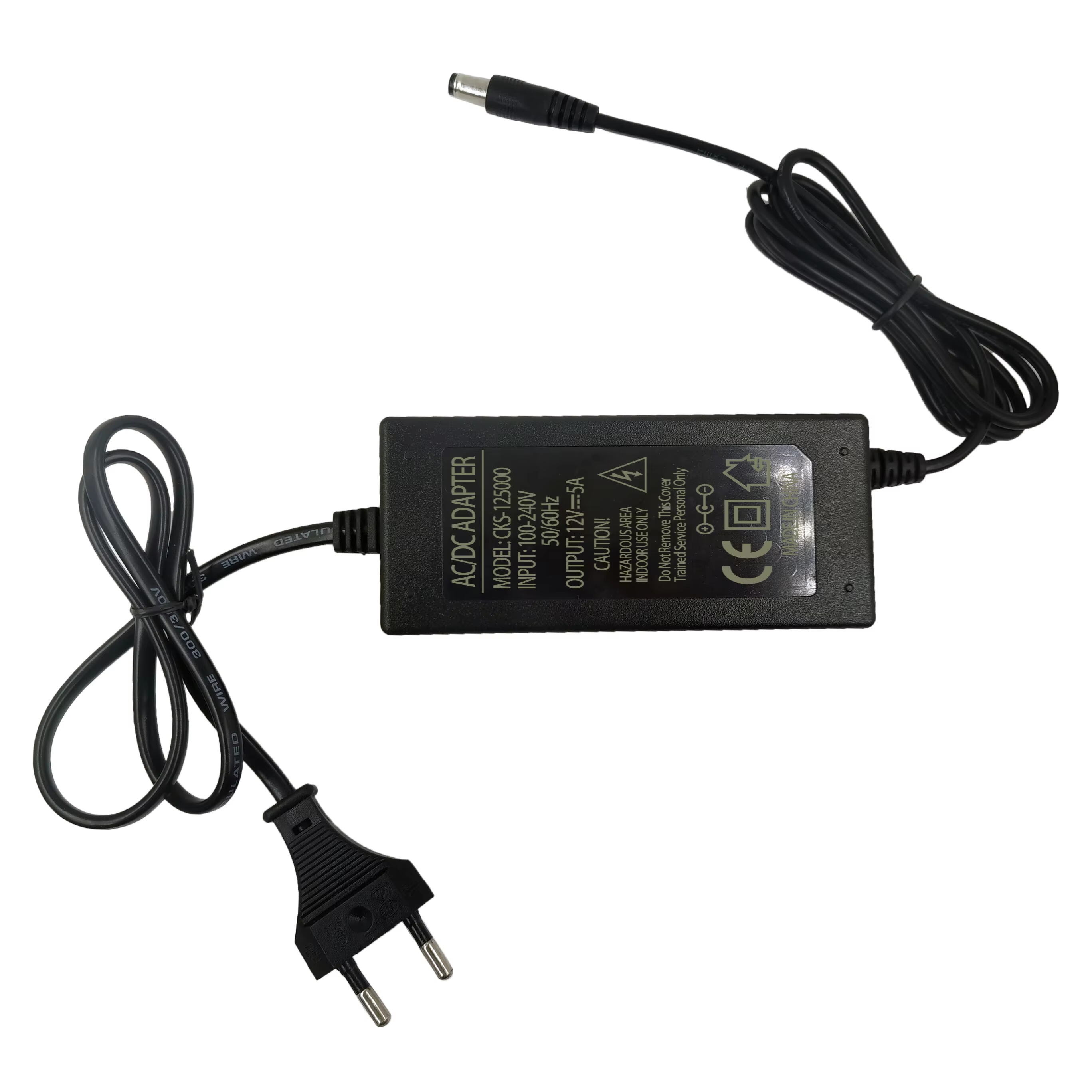Moderne werkplekke vereis doeltreffendheid. Desktop-adapters laat jou toe om verskeie toestelle gelyktydig van krag te voorsien, wat die behoefte aan verskeie laaiers elimineer. Hierdie adapters gebruik gevorderde kragverspreiding om veilige en betroubare laai te verseker. Deur kabelrommel te verminder, skep hulle 'n skoner, meer georganiseerde omgewing. Jy kan op hulle staatmaak om jou daaglikse tegnologiebehoeftes te vereenvoudig.
Hoe Desktop Adapters Werk
Kragverspreidingsmeganismes en USB Kragaflewering
Desktop-adapters gebruik gevorderde kragverspreidingsmeganismes om elektrisiteit doeltreffend toe te ken. Hierdie meganismes verseker dat elke gekonnekteerde toestel die regte hoeveelheid krag ontvang. Byvoorbeeld, as jy 'n skootrekenaar en 'n slimfoon aansluit, pas die adapter die kraguitset aan om aan die behoeftes van albei toestelle te voldoen. Dit voorkom oorlaai of onderlaai.
USB Krag Aflewering (USB-PD) speel 'n sleutelrol in moderne adapters. Dit stel vinniger en meer buigsame laai in staat deur kragvlakke tussen die adapter en jou toestelle te onderhandel. Met USB-PD kan jy hoë-vraag elektronika soos skootrekenaars laai terwyl jy terselfdertyd kleiner toestelle soos oordopjes van krag voorsien. Hierdie tegnologie verseker kompatibiliteit oor 'n wye reeks toestelle.
Rol van slim laai en krag deurlaat tegnologie
Slim laai tegnologie maak lessenaar adapters selfs meer doeltreffend. Dit detecteer die kragvereistes van elke gekonnekteerde toestel en pas die uitset dienooreenkomstig aan. Dit voorkom oorverhitting en verleng die lewensduur van jou toestelle.
Krag deurvoer tegnologie is 'n ander innovasie. Dit stel jou in staat om verskeie toestelle te laai terwyl jy steeds die adapter as 'n hub vir data-oordrag gebruik. Byvoorbeeld, jy kan 'n hardeskyf aansluit en jou foon terselfdertyd laai sonder om funksionaliteit te verloor. Hierdie kenmerk is veral nuttig vir professionele persone wat op verskeie toestelle tydens hul werksdag staatmaak.
Veiligheidskenmerke, insluitend oorlaaibeskerming en sertifisering
Veiligheid is 'n topprioriteit vir lessenaaradapters. Die meeste modelle sluit oorlaaibeskerming in om skade van kragpieke te voorkom. As die adapter 'n onveilige kragvlak waarneem, skakel dit outomaties af om jou toestelle te beskerm.
Sertifisering soos UL, CE, en FCC verseker dat die adapter aan streng veiligheidsstandaarde voldoen. Wanneer jy 'n gesertifiseerde adapter kies, kan jy vertrou dat dit getoets is vir betroubaarheid en prestasie. Hierdie kenmerke bied jou gemoedsrus terwyl jy verskeie toestelle van krag voorsien.
Voordele van Lessenaaradapters
Gerief en werkruimte-organisasie
Desktop-adapters help jou om 'n meer georganiseerde werksruimte te skep. In plaas daarvan om met verskeie laaiers en kabels te jongleer, kan jy op een adapter staatmaak om al jou toestelle van krag te voorsien. Dit verminder rommel en maak jou lessenaar skoner. 'n Netjiese werksruimte verbeter fokus en produktiwiteit.
Jy kan ook jou toestelle meer vrylik posisioneer. Met minder kabels het jy meer buigsaamheid om jou gadgets te rangskik op 'n manier wat jou werksvloei pas. Of jy nou van die huis af werk of in 'n kantoor, desktop-adapters maak dit makliker om jou toestelle te bestuur.
Energie-doeltreffendheid en vinnige laai vermoëns
Energie-doeltreffendheid is 'n ander voordeel van desktop-adapters. Hierdie toestelle gebruik gevorderde tegnologie om energieverlies te minimaliseer. Hulle lewer net die krag wat jou toestelle nodig het, wat jou help om elektrisiteit te bespaar. Oor tyd kan dit jou energierekeninge verlaag.
Vinnige laai is 'n spelveranderder vir besige gebruikers. Baie lessenaar-adapters ondersteun vinnige laai protokolle, wat jou toelaat om jou toestelle vinnig op te laai. Hierdie kenmerk is veral nuttig wanneer jy hoë-vraag elektronika soos skootrekenaars of tablette in 'n kort tydjie moet laai.
Kompatibiliteit met verskillende toestelle, insluitend hoë-vraag elektronika
Lessenaar-adapters is ontwerp om met 'n wye verskeidenheid toestelle te werk. Jy kan hulle gebruik om slimfone, skootrekenaars, tablette en selfs speletjieskonsoles op te laai. Hulle ondersteun ook hoë-vraag elektronika wat meer krag benodig.
Moderne adapters sluit dikwels verskeie poorte in, soos USB-C en USB-A, om kompatibiliteit te verseker. Hierdie veelsydigheid beteken jy het nie aparte laaiers vir elke toestel nodig nie. Of jy nou 'n skootrekenaar of 'n slimhorlosie van krag voorsien, 'n lessenaar-adapter kan dit alles hanteer.
Kies die regte lessenaaradapter
Evaluering van kraguitset en toestelvereistes
Wanneer jy 'n desktop-adapter kies, moet jy die kraguitset oorweeg. Elke toestel wat jy aansluit het spesifieke kragvereistes. Byvoorbeeld, skootrekenaars benodig dikwels 'n hoër wattage in vergelyking met slimfone of oordopjes. Kontroleer die wattage-gradering van die adapter en verseker dat dit ooreenstem met of die gekombineerde behoeftes van jou toestelle oortref.
Kyk na die aantal en tipe poorte wat beskikbaar is. USB-C poorte is ideaal vir hoë-vraag elektronika soos skootrekenaars, terwyl USB-A poorte goed werk vir kleiner gadgets. As jy van plan is om verskeie toestelle gelyktydig op te laai, kies 'n adapter met genoeg poorte om aan jou behoeftes te voldoen.
Belangrikheid van veiligheidssertifikate en boukwaliteit
Veiligheid moet altyd 'n prioriteit wees. Gecertifiseerde desktop-adapters voldoen aan streng standaarde vir betroubaarheid en prestasie. Soek na sertifikate soos UL, CE, of FCC op die produk etiket. Hierdie verseker dat die adapter getoets is vir veiligheid.
Boukwaliteit tel ook. 'n Goedgeboude adapter hou langer en weerstaan slytasie. Kies modelle met duursame materiale en hittebestande ontwerpe. Dit verminder die risiko van oorverhitting en verseker konsekwente prestasie oor tyd.
Balans tussen koste, kenmerke en langtermynwaarde
Prijs is belangrik, maar dit moet nie die enigste faktor wees nie. 'n Goedkoper adapter mag dalk essensiële kenmerke of veiligheidssertifikate ontbreek. Aan die ander kant, 'n hoë-end model met onnodige kenmerke kan 'n vermorsing van geld wees.
Fokus op langtermynwaarde. Belê in 'n adapter wat aan jou huidige behoeftes voldoen en ruimte het vir toekomstige opgraderings. Kenmerke soos vinnige laai, veelvuldige poorte, en slim laai-tegnologie voeg gerief en doeltreffendheid by.
Desktop-adapters het noodsaaklik geword om verskeie toestelle doeltreffend van krag te voorsien. Teen 2025 sal vooruitgang in kragaflewering en slim laai dit selfs meer veelsydig maak. Om die regte adapter te kies, verseker 'n rommelvrye werksplek en hou jou toestelle optimaal aan die gang. Belê in een om jou tegnologie-opstelling te vereenvoudig en produktiwiteit te verbeter.

